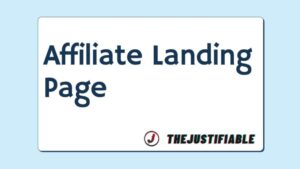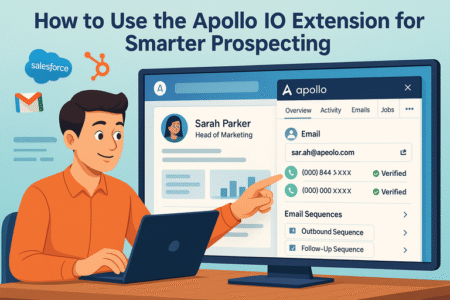Table of Contents
When it comes to growing a business online, the right blog format can be the difference between earning trust and losing attention. Have you ever clicked on a blog post that felt cluttered, confusing, or disconnected—and left before finishing it?
Or wondered why some posts instantly draw you in while others feel flat? The way a blog is structured shapes how readers see your brand, how much value they get from your content, and whether they return for more.
In this guide, I’ll walk through what makes a blog format effective for business, how to structure posts so they build credibility, and the specific steps you can use to turn casual visitors into loyal readers.
Why Blog Format Matters for Building Business Credibility
The structure of your blog isn’t just decoration—it’s the backbone of how your business is perceived. Blog format plays a direct role in whether readers stay, trust what you’re saying, and eventually take action.
Blog Layout Shapes First Impressions With Readers
Think about walking into a store. If the aisles are messy and the shelves are hard to navigate, you’re less likely to stick around. Blogs work the same way. When someone lands on your post, the layout is the first thing they notice—even before they dive into your words.
A clean, organized blog layout makes the reader feel like they’re in good hands. For example, using short paragraphs, well-placed subheadings, and whitespace creates a sense of ease.
I always suggest looking at your blog on mobile before publishing. If you have large text blocks that feel overwhelming, chances are your readers will bounce before they ever get to your insights.
Formatting Choices Influence Readability and Retention
Even if your content is brilliant, poor formatting can bury it. Long, unbroken chunks of text scare readers away, especially on smaller screens. Formatting choices—like including bullet lists, numbered steps, or pull quotes—make content feel lighter and easier to digest.
Here’s a quick comparison of how readers experience content:
- Unformatted: A dense wall of text that requires effort and patience.
- Formatted: Shorter paragraphs with skimmable highlights, guiding the reader’s eyes to the most important parts.
I believe readability is one of the most underrated trust signals. When readers don’t have to work hard to understand your message, they naturally feel more positive about your brand.
Clear Structure Reinforces Professional Authority
A blog post without structure feels like rambling. And rambling doesn’t build authority—it builds doubt. By organizing your content with a clear beginning, middle, and end, you show readers you’ve thought deeply about the problem and the solution.
This is where your subheadings, transitions, and summary matter. For example, if you’re writing a guide on digital marketing, break it down into digestible chunks like “Strategy,” “Execution,” and “Measurement.”
Readers will trust you more when they see you’ve mapped out the entire journey rather than dumping scattered thoughts on the page.
Use an Attention-Grabbing Blog Title That Delivers Value
Your title is the handshake before the conversation. A weak handshake? Readers won’t even give you a chance. A blog title is where you first prove that your post is worth their time.
Write Titles That Promise a Clear Benefit
Readers click when they see a clear promise. For example, compare these two titles:
- Weak: “Tips for Email Marketing”
- Strong: “7 Email Marketing Hacks to Double Your Open Rates”
The second works because it makes a promise: you’ll learn hacks, and they’ll directly improve results. I recommend asking yourself: What’s the benefit the reader will gain? Then build your title around that outcome.
Keep Blog Titles Concise and Easy To Scan
If your title runs long, people scroll past it. Titles that work best usually sit between 55–60 characters. They’re long enough to explain value but short enough to be digested in one glance.
Think of how your title looks in Google search results. If it’s cut off halfway, you’ve lost your chance to make an impression.
A simple trick: write your draft title, then trim it down by removing filler words until only the value remains.
Add Relevant Keywords Without Sounding Forced
SEO matters, but keyword stuffing ruins trust. If your title reads awkwardly just to squeeze in a phrase, readers will notice. For example:
- Awkward: “Best Blog Format Business Blog Format Post Structure Guide”
- Natural: “Best Blog Format for Business: Write Posts That Build Trust”
The difference? The second reads like a natural sentence while still hitting the keyword.
I suggest writing your ideal human-friendly title first, then checking if the keyword fits smoothly. If it doesn’t, reframe it—but never sacrifice clarity for the algorithm.
Start With a Hook That Connects to Reader Pain Points
The hook is where you prove to readers that you “get them.” Without it, people skim and leave. A strong hook grabs attention, builds empathy, and leads them into the solution your blog promises.
Use Relatable Stories or Data To Build Rapport Early
Imagine starting a blog post on time management with: “Most people waste two hours a day on tasks that don’t matter.”
That’s a stat people instantly connect with. Or you could tell a short story: “I once spent an entire morning answering emails, only to realize I hadn’t touched the real work that mattered.”
Stories and data work because they hit both sides of the brain—logic and emotion. In my experience, mixing the two makes a hook far more powerful than relying on one alone.
Show Readers You Understand Their Challenges
Readers want reassurance that you’re not just handing out generic advice—you understand what they’re dealing with. That’s why phrasing matters.
Instead of saying, “Content creation can be challenging,” say, “You’ve probably stared at a blank page, wondering how to turn your ideas into something worth reading.”
Small shifts in language create a sense of empathy. When readers feel you’ve been where they are, they’re more likely to trust where you’ll take them.
Transition Naturally Into the Core Promise of the Post
Once you’ve grabbed attention, you need to move into the heart of your post without losing momentum. This is where many bloggers stumble—they deliver a strong hook but then abruptly shift tone.
Here’s how I handle it:
- Start with a pain point or story.
- Acknowledge the reader’s frustration.
- Lead into the solution your blog promises.
For example: “Struggling to keep readers engaged isn’t about writing talent—it’s about blog format. And once you learn how to structure posts the right way, you’ll not only hold attention but build long-term trust.”
That bridge from problem to promise makes your post feel cohesive instead of disjointed.
Organize Content With Logical Blog Format Structure
A well-structured blog post is like a well-built house—you don’t notice the framework unless it’s missing. When content is scattered or poorly arranged, readers feel lost, and lost readers don’t stick around.
A logical blog format keeps readers engaged and helps them trust that you know where you’re leading them.
Break Content Into Clear, Digestible Sections
Readers don’t consume blog posts like novels—they scan. If your blog looks like an uninterrupted wall of words, most people will leave before they even start. The solution is to break ideas into sections that are easy to follow and skim.
Here’s a trick I use: write your draft, then go back and imagine someone is speed-reading. Could they understand your main points just from your subheadings and opening lines? If not, your sections probably need refining.
Another practical tip is to keep each section focused on one main idea. For example, in a post about SEO tools, don’t mix “keyword research” and “backlink analysis” in the same section.
Instead, give each one space to breathe. This not only makes reading easier but also strengthens your credibility—because readers can see you’ve thought through the structure.
Use Subheadings To Guide Readers Through the Post
Think of subheadings as road signs on a highway. Without them, the reader doesn’t know where they are or where they’re going. Clear subheadings allow people to jump to what they need most while still reassuring them that the whole journey is worth it.
In practice, I recommend using H2s for big ideas and H3s to unpack details. For example, a post on social media strategy might have:
- H2: Build a Strong Content Calendar
- H3: Choose Posting Times That Match Your Audience
- H3: Recycle High-Performing Posts for Efficiency
That structure tells the reader exactly what to expect, avoids overwhelm, and creates a natural progression of ideas.
Maintain a Flow That Feels Natural, Not Mechanical
The danger with too much structure is that your post starts to feel robotic, like it was written by a machine. The key is to balance structure with flow. Each section should naturally lead into the next, just as a conversation shifts topics without feeling forced.
One technique I use is to close each section with a “bridge sentence.” For example: “Breaking content into sections makes it easier to read—but sections only work if your subheadings guide the reader in the right direction.”
That sentence neatly closes one point and opens the next, creating momentum without abrupt jumps.
Write With a Conversational Yet Professional Tone
The way you say something is often more important than what you say. If your blog format is rigid but your tone feels cold, readers won’t trust you. On the flip side, if your tone is warm and approachable while still showing expertise, you’ll build lasting credibility.
Balance Expertise With Relatable Language
It’s tempting to sound overly formal in business blogs, but too much polish makes you feel distant.
I suggest writing as if you’re sitting across from one reader over coffee. You’re still sharing expertise, but in a way that feels like advice, not a lecture.
For example, instead of: “Utilizing these methodologies maximizes content visibility,” try: “These simple methods will make your content easier to find.”
Same idea, but one feels accessible. Readers remember how you made them feel, not how many fancy words you used.
Avoid Jargon That Creates Distance From Readers
Jargon is the silent trust killer. While some technical terms are necessary, most confuse more than they impress. If you must use a term, explain it briefly.
For instance: “CTR (click-through rate) is the percentage of people who click your link after seeing it.”
I believe clarity is more powerful than complexity. A reader should never leave your post feeling dumb. If anything, they should feel smarter, like you gave them the inside scoop without making it complicated.
Use Inclusive Language To Build Trust and Connection
One of the simplest ways to build trust is through the words “you” and “we.” When you say “you,” it makes the advice feel personal. When you say “we,” it creates a sense of shared experience.
For example: “You may have struggled to keep readers on the page—we’ve all been there. But with a better blog format, it gets easier.” This phrasing pulls the reader in and positions you as a partner rather than a distant expert.
Make Content Easy To Read With Visual Formatting
Even the best ideas can fall flat if the formatting makes them hard to read. Visual structure isn’t about decoration—it’s about reducing friction so readers can absorb your message effortlessly.
Short Paragraphs Improve Skimmability and Flow
A long block of text feels intimidating, especially on mobile screens. That’s why I recommend keeping paragraphs between two and four sentences. It’s not about dumbing down—it’s about creating breathing room.
Take a look at how you’re reading this right now. Chances are, you’re glancing through the sections, pausing where the layout feels easy, and skipping when it doesn’t.
That’s exactly how your readers behave too. Short paragraphs help them stick with you.
Use Lists and Bullets Only When Truly Helpful
Lists are powerful when used sparingly. They make complex steps easier to follow and highlight information readers don’t want to miss. But when every other sentence is a bullet, the impact fades.
Here’s a quick example of where bullets shine:
- Summarizing benefits or features
- Outlining step-by-step instructions
- Comparing options quickly
Use them as a spotlight, not wallpaper. That way, when a reader sees a list, they know it’s worth paying attention to.
Add White Space To Reduce Reader Fatigue
White space isn’t wasted space—it’s the pause that helps readers process. When every inch of the screen is packed with text, the eye tires out, and comprehension drops. Strategic spacing gives your ideas room to breathe and makes your content feel approachable.
A practical tip: preview your blog on mobile before publishing. If you need to zoom in, squint, or scroll endlessly to digest one idea, it’s time to add spacing. Think of white space as hospitality—it makes readers feel welcome, comfortable, and willing to stay longer.
Support Claims With Evidence and Reliable Sources
Readers don’t just want to know what you think—they want proof that your insights hold up in the real world.
Backing up your claims with data and credible references is what transforms a blog post from “just another opinion” into a resource worth trusting.
Cite Industry Data and Research To Build Authority
Numbers have power. When you drop a statistic into your content, it instantly grounds your ideas in reality. For example, saying “blogging can increase website traffic” is vague. But saying, “Companies that blog regularly generate 55% more website visitors” carries weight.
I suggest creating a habit of keeping a running document where you store stats from trusted sources. This saves you from scrambling later.
You don’t need to overload readers with figures, but one or two well-placed stats per section can anchor your credibility. Think of it like seasoning food—enough to bring out flavor, but not so much that it overwhelms the dish.
Reference Experts To Strengthen Credibility
Borrowing authority from recognized experts is a smart move, especially if your audience might not know you yet. Quoting someone well-known in your industry shows that you’re in conversation with the bigger players, not just speaking in isolation.
For example: “As Neil Patel explains, keeping blog posts under 2,000 words can limit ranking potential—long-form content tends to perform better.” Dropping in insights like this helps your content feel current and connected to the larger conversation happening in your field.
Show Transparency When Sharing Opinions or Insights
Sometimes you won’t have hard data, and that’s okay. Readers respect honesty. If you’re offering a personal take, frame it clearly: “In my experience…” or “I’ve found that…” This small shift tells readers you’re not presenting an opinion as universal truth.
For example: “I believe shorter introductions work better for business blogs because people want to get to the value fast. That said, if storytelling is your brand’s strength, a longer intro could still be effective.” Transparency like this shows humility and makes you more trustworthy, not less.
Integrate Visuals To Reinforce Key Messages
Words carry the story, but visuals lock it in. Visuals make complex ideas simple, keep readers engaged, and help your blog format feel polished and professional.
Use Charts and Infographics To Clarify Complex Ideas
Imagine explaining customer behavior trends with only text—it’s heavy. Now imagine showing a chart of bounce rates dropping after redesigning a blog layout. That visual says more in seconds than a paragraph could.
I often recommend using simple bar graphs or line charts to illustrate growth, comparisons, or step-by-step progress.
Tools like Canva or Google Data Studio make it easy to design clean visuals without needing a graphic designer. If your audience includes decision-makers, infographics are gold because they can share them internally without extra explanation.
Add Branded Images or Screenshots To Build Trust
Screenshots are one of the fastest ways to prove you’ve actually done what you’re teaching. If you’re writing about setting up a campaign in Mailerlite, show them exactly where to click: “From the dashboard, go to Campaigns > Create Campaign.”
Pair that instruction with a screenshot of the button. That’s instantly more helpful than words alone.
Adding branded visuals—like images that include your logo or brand colors—also builds trust. Readers start to recognize your brand identity and associate it with value. Over time, that recognition compounds into authority.
Avoid Stock Images That Feel Generic and Distracting
You know the ones—smiling business people in suits shaking hands in a white office. These do nothing to build trust. In fact, they often break it because readers can sense when imagery is staged.
Instead, use original photos when you can, even if they’re simple. A quick phone snapshot of your team at work feels more genuine than a polished stock photo.
If you must use stock images, choose ones that feel authentic—messy desks, candid interactions, real-world context. Readers trust humanity more than perfection.
End With a Strong Conclusion That Builds Trust
The ending is your chance to leave readers with a sense of clarity and confidence. Too many bloggers just trail off, but a strong conclusion ties the whole piece together and nudges readers toward action.
Summarize Key Takeaways Without Repeating Entire Post
Think of your conclusion as the highlight reel, not a rerun. Pull out the most impactful points, but keep it concise.
For example: “We’ve covered why blog format matters, how structure builds credibility, and how visuals keep readers engaged. When you put these together, you create content that’s not only readable but trustworthy.”
This quick recap reassures readers they didn’t miss anything while reinforcing the core value of the post.
Give Readers a Clear Next Step or Call To Action
Your blog shouldn’t just end—it should guide readers to what comes next. That might mean inviting them to download a checklist, sign up for your newsletter, or apply what they learned right away.
For example: “Try auditing your last blog post using these tips. Did your subheadings guide the reader? Were your paragraphs easy to skim? Small tweaks can make a big difference.” That call to action feels practical, not pushy.
Reinforce How Your Expertise Solves Their Problem
The final lines are where you remind readers that you’re not just giving advice—you can help them. It’s not about selling aggressively; it’s about positioning yourself as the trusted partner they’ve been looking for.
For instance: “Blog format is the foundation of building trust with your audience. I’ve seen businesses transform their engagement simply by structuring content the right way—and you can too. If you want a repeatable format that saves time and keeps readers hooked, start with these steps today.”
That kind of ending leaves the reader with a sense of possibility—and a reason to come back for more.
Optimize Blog Format for SEO Without Losing Trust
Good SEO should never feel forced. The right blog format balances visibility in search engines with a natural, trustworthy experience for readers.
If you lean too hard into keywords, people notice. If you ignore them entirely, your content may never be found. The trick is weaving SEO in seamlessly so it feels invisible.
Place Keywords Naturally in Headings and Copy
Your readers shouldn’t feel like you’re writing for Google instead of them. That’s why I recommend slipping your focus keyword into headings and early in the introduction where it makes sense.
For example, if your keyword is “blog format,” you might write: “A strong blog format helps readers stay engaged and builds credibility.”
Avoid overdoing it. A good rule of thumb is: if a sentence sounds strange when you read it aloud, you’ve gone too far.
I often test this by literally reading my draft out loud—if the keyword sticks out like a sore thumb, I rewrite it until it flows.
Write Meta Descriptions That Match the Blog Promise
Your meta description is often the first thing readers see in search results, so it should act like an honest elevator pitch. Instead of stuffing keywords, write it as if you’re answering: “Why should someone click this post?”
For example:
- Weak meta: “Blog format guide with tips, structure, and SEO advice for blog posts.”
- Strong meta: “Discover the best blog format for business posts that earn trust, improve readability, and boost search visibility.”
The strong version matches the blog’s promise and sets clear expectations—this builds trust before they even click.
Structure Posts for Featured Snippets and Search Visibility
If you’ve ever seen those boxed answers at the top of Google, that’s a featured snippet. Structuring your blog for them is simpler than it looks. Use short, clear definitions, numbered lists, and tables where appropriate.
For example, if you’re writing “Steps to Create a Blog Format Template,” you might include:
- Define your target audience.
- Outline the structure (intro, body, conclusion).
- Add SEO elements like headings and meta.
- Review and edit for flow.
This clear structure signals to search engines that your content is a ready-made snippet. And when you win that top spot, trust skyrockets because readers see your post as the “official” answer.
Edit and Proofread for a Professional Final Touch
Even the best content loses credibility if it’s riddled with typos, clunky sentences, or inconsistent formatting. Editing isn’t just about grammar—it’s about respect for your reader’s time and attention.
Catch Grammar Mistakes That Undermine Authority
A simple typo might seem harmless, but readers often interpret it as carelessness. If you can’t proof your own content, why should they trust your business advice?
I recommend running every draft through a tool like Grammarly or Hemingway—but don’t stop there. Tools catch mistakes, but they can’t replace a final human read-through.
One trick I use is to change the font before proofreading. It forces your brain to see the words differently and makes it easier to catch errors you’d normally skim past.
Improve Flow and Clarity Through Careful Editing
Editing is more than fixing grammar—it’s about making your content smooth and easy to follow. Ask yourself: Does each sentence push the reader forward? If you find tangents or filler, cut them.
Sometimes I’ll record myself reading the draft aloud. If I stumble, it usually means the sentence structure is awkward. Fixing those small friction points keeps the reader engaged.
Ensure Formatting Is Consistent Across the Post
Formatting details—like heading sizes, font choices, and spacing—may seem small, but they signal professionalism. Imagine reading a blog where one section has giant bold subheadings and another section uses italics instead. It feels sloppy, and sloppy doesn’t inspire trust.
I suggest creating a simple style checklist:
- Are all H2s the same size and format?
- Are bullets styled consistently?
- Is spacing between paragraphs uniform?
Consistency creates a polished reading experience, which reinforces authority.
Pro Tip: Use a Repeatable Blog Format Template
If you want to save time and maintain quality, a repeatable blog format template is your secret weapon. It ensures every post has a clear structure while giving you flexibility to adapt based on the topic.
Create a Standard Structure To Save Time on Writing
Having a go-to structure means you never start from scratch. A simple template might look like this:
- Title that promises value
- Short, engaging introduction with the focus keyword
- Clear H2 sections breaking down the main ideas
- Supporting visuals or examples inside the content
- A conclusion that summarizes and calls readers to action
I suggest building this into a document or inside your CMS so every draft follows the same skeleton automatically.
Keep Formatting Consistent To Build Reader Trust
Readers love consistency. When they know what to expect from your blog format, they’ll return more often because it feels familiar. Think of it like your favorite coffee shop—part of the reason you go back is because you know exactly how the experience will flow.
This doesn’t mean every post looks identical, but the rhythm should feel familiar. If one post has an intro-hook-body-conclusion structure and another feels scattered, readers will trust you less.
Allow Flexibility To Adapt Posts for Different Topics
Templates should save you time, not box you in. Some topics need step-by-step instructions, others need storytelling. The best blog format template gives you guardrails, not handcuffs.
For example: if you’re writing a “how-to” post, you might lean heavily on numbered steps. If you’re sharing thought leadership, you may expand more on stories or examples. The structure stays consistent, but you adjust the content style to fit the purpose.
A template is really about reducing decision fatigue. Instead of worrying about how to structure a post every time, you can focus on making the content engaging and trustworthy.






